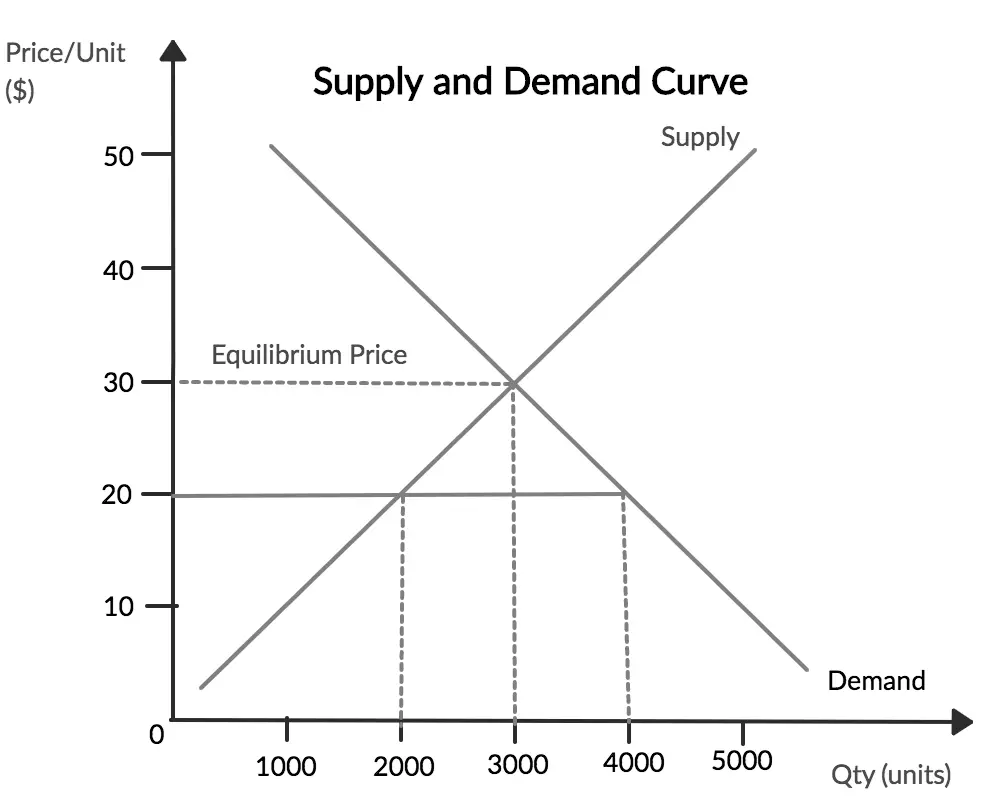What is Supply and Demand?
What is Supply and Demand
Supply and demand. Demand and supply. However you call it, they both interact with each other. So what is supply and demand? Simply put, supply and demand relates to the relationship between, the amount of products/services produced, the amount that people want, and the impact that has on prices.
Let us take an example:
Barrys Bakery

Barry’s Bakery is in the business of producing doughnuts. It employs two people who make 100 every day. However, they sell out before the end of every day. Customers come in and ask for doughnuts, but they have sold out.
In this situation, there is excess demand and not enough supply. Barry’s Bakery is unable to satisfy their customers needs. They can either produce more doughnuts, or increase prices.
If they increase prices, they may lose customers. However, they will make more profit and bring demand down.
They can also make more doughnuts, thereby increasing supply. The bakery would have to: improve its productivity, hire more workers, or increase the hours of its existing workers.
So as we can see from this brief example; when there is an excess level of demand, two reactions can result: increased prices, or increased supply.
The relationship between these three variables adapts depending on whether there is excess supply or excess demand. However, before we look at excess demand and supply, let us first define what is demand.
Supply and Demand Curve Equilibrium
The supply and demand curve is where the supply curve and demand curve meets on the same chart. It creates what is known as an equilibrium point. This is whereby the supply curve and the demand curve intersect.
At the equilibrium point, both supply and demand are met. For example, a Doughnut store may serve 100 customers a day. Each customer buys one doughnut. So demand equals 100. In order for supply and demand to reach equilibrium, the store must supply only 100 doughnuts.
If the store supplies too many doughnuts; this is what is known as excess supply. And if the store supplies too few doughnuts; this is what is known as excess demand.
At a certain price, supply and demand are at different points of the curve. As we can see from the graph below; at $20 per unit, supply is 2,000, but demand is 4,000.

So what does this mean? At $20, producers are actively incentivised to increase supply. Many people are demanding their products. So prices increase and so does supply. As a result, demand for the products also decreases. This is because customers react to the increase in price by demanding fewer products.
This naturally brings supply and demand closer to equilibrium. On occasion, producers may oversupply the market. Meaning there is not enough demand. Producers then react by lowering prices to increase demand back in line with supply.
In turn, the equilibrium point on the graph is reached. If not, prices, supply, and demand react in a way that brings the market closer to this optimal point.
At a certain price, supply and demand are at different points of the curve. As we can see from the graph below; at $20 per unit, supply is 2,000, but demand is 4,000.
About Paul
Paul Boyce is an economics editor with over 10 years experience in the industry. Currently working as a consultant within the financial services sector, Paul is the CEO and chief editor of BoyceWire. He has written publications for FEE, the Mises Institute, and many others.

Further Reading
 Groupthink: Definition, Characteristics & Examples - Groupthink is the tendency for individuals to agree with each other in a group setting in order to conform and…
Groupthink: Definition, Characteristics & Examples - Groupthink is the tendency for individuals to agree with each other in a group setting in order to conform and…  Availability Heuristic: Definition & Examples - The availability heuristic is where recent memories are weighted more significantly.
Availability Heuristic: Definition & Examples - The availability heuristic is where recent memories are weighted more significantly.  Commercialization - Commercialization refers to the process of introducing a new product, service, or innovation into the market with the aim of…
Commercialization - Commercialization refers to the process of introducing a new product, service, or innovation into the market with the aim of… 